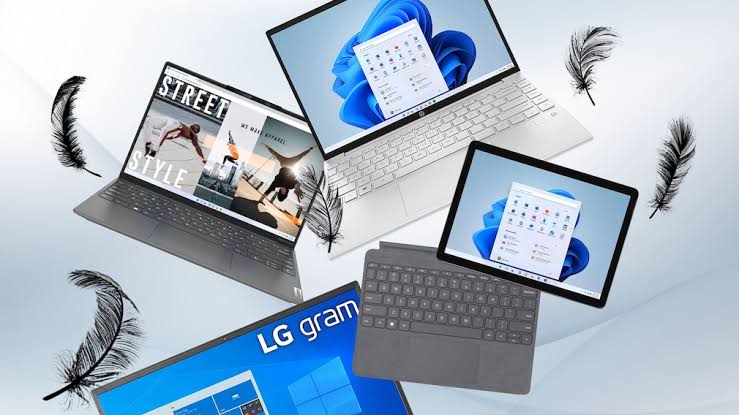The history of laptops is a story that reflects the growth and development of technology in the last few years. The laptop, once an enormous and awkward piece of technology, has evolved into a compact and efficient machine of today. This evolution has impacted the way we work, communicate and various aspects of our lives making technology more convenient and embedded.
The Early Days: Origin of Portable Computer
The idea of portable computer can be traced back to the early seventies. The first attempt to design a portable computing device was made by IBM when it released the IBM 5100 in 1975. While the IBM 5100 could be carried from one place to another, it was quite bulky and weighed approximately 55 pounds; it was about the size of a small suitcase. It had a tiny CRT display, an integrated keyboard, and tape drives for data storage – it was more portable than a conventional minicomputer, but not today’s definition of a laptop.
The first true portable computer was Osborne 1 which was launched in 1981. Developed by Adam Osborne, this computer was marketed as the first true portable computer. It measured about 24 pounds and offered a 5-inch screen, a keyboard which can be flipped as a lid, and two 5. While it may seem incredibly heavy by today’s standards, the Osborne 1 could be easily transported due to its size and was operable through a battery, though it was a small one for the most part.
The Clamshell Design: Entering the Mainstream
The evolution of laptops took a significant leap forward in 1983 with the introduction of the Compaq Portable. While still heavy, weighing in at around 28 pounds, it was among the first IBM PC-compatible portable computers, which contributed to its popularity. The true game-changer, however, came in 1984 with the launch of the IBM 5155 Portable, featuring a clamshell design that would become the standard for laptops.
The clamshell design, characterized by a hinged screen that could fold down over the keyboard, allowed for a more compact and portable form factor. This design innovation paved the way for future laptops, making them more practical for everyday use. The 1980s also saw the introduction of other notable models, such as the Toshiba T1100, often regarded as the first true laptop due to its lightweight design and battery-powered operation.
The 1990s: The Rise of Laptops in the Business World
The 1990s marked a significant era for laptops, as they began to gain widespread acceptance in the business world. This period saw rapid advancements in technology, including the development of more powerful processors, increased storage capacity, and improved battery life. These innovations made laptops more practical and efficient for business professionals who needed to work on the go.
One of the most iconic laptops of this era was the IBM ThinkPad, introduced in 1992. The ThinkPad's distinctive black design, red TrackPoint pointing device, and robust build quality made it a favorite among business users. The ThinkPad series set new standards for laptop reliability and performance, solidifying its place in corporate environments.
The 2000s: Transition to Ultraportables and Netbooks
The early 2000s witnessed further miniaturization and increased portability in laptops. The quest for lighter and thinner devices led to the development of ultraportables, which prioritized mobility without compromising on performance. Apple played a pivotal role in this trend with the release of the MacBook Air in 2008. The MacBook Air was revolutionary for its time, boasting a thin and lightweight design, solid-state drive (SSD) storage, and impressive battery life. Its sleek form factor set a new benchmark for laptop design, influencing the entire industry.
During this period, another category of laptops emerged: netbooks. Netbooks were small, lightweight, and affordable laptops designed primarily for basic tasks such as web browsing, email, and word processing. The Asus Eee PC, launched in 2007, was one of the first and most popular netbooks.
The 2010s: Convergence of Power and Portability
The 2010s saw a convergence of power and portability, as laptops continued to become thinner, lighter, and more powerful. Advances in processor technology, particularly from Intel and AMD, enabled manufacturers to pack more performance into smaller form factors. Ultrabooks, a category defined by Intel, epitomized this trend, offering high-performance laptops with sleek designs and long battery life.
The introduction of the Retina display by Apple in 2012 set new standards for screen resolution and clarity, making laptops more visually appealing and suitable for tasks that required high-definition displays, such as graphic design and video editing. Touchscreen laptops also became more prevalent during this decade, providing users with new ways to interact with their devices.
The 2020s and Beyond: The Future of Laptops
As we move into the 2020s, the evolution of laptops continues at a rapid pace. The COVID-19 pandemic has accelerated the adoption of remote work and online learning, further emphasizing the importance of laptops in our daily lives. Manufacturers are now focusing on creating devices that offer the perfect balance between performance, portability, and connectivity.
One of the most significant trends in recent years is the integration of artificial intelligence (AI) and machine learning into laptops. AI-powered features, such as facial recognition, voice assistants, and intelligent battery management, enhance the user experience and improve security. Additionally, advancements in battery technology are extending the battery life of laptops, enabling users to work for longer periods without needing to recharge.
Furthermore, the shift towards sustainable and eco-friendly technology is influencing laptop design and manufacturing. Companies are increasingly using recycled materials, reducing energy consumption, and adopting environmentally friendly practices to minimize their carbon footprint. This trend aligns with the growing awareness of environmental issues and the demand for more sustainable products.
